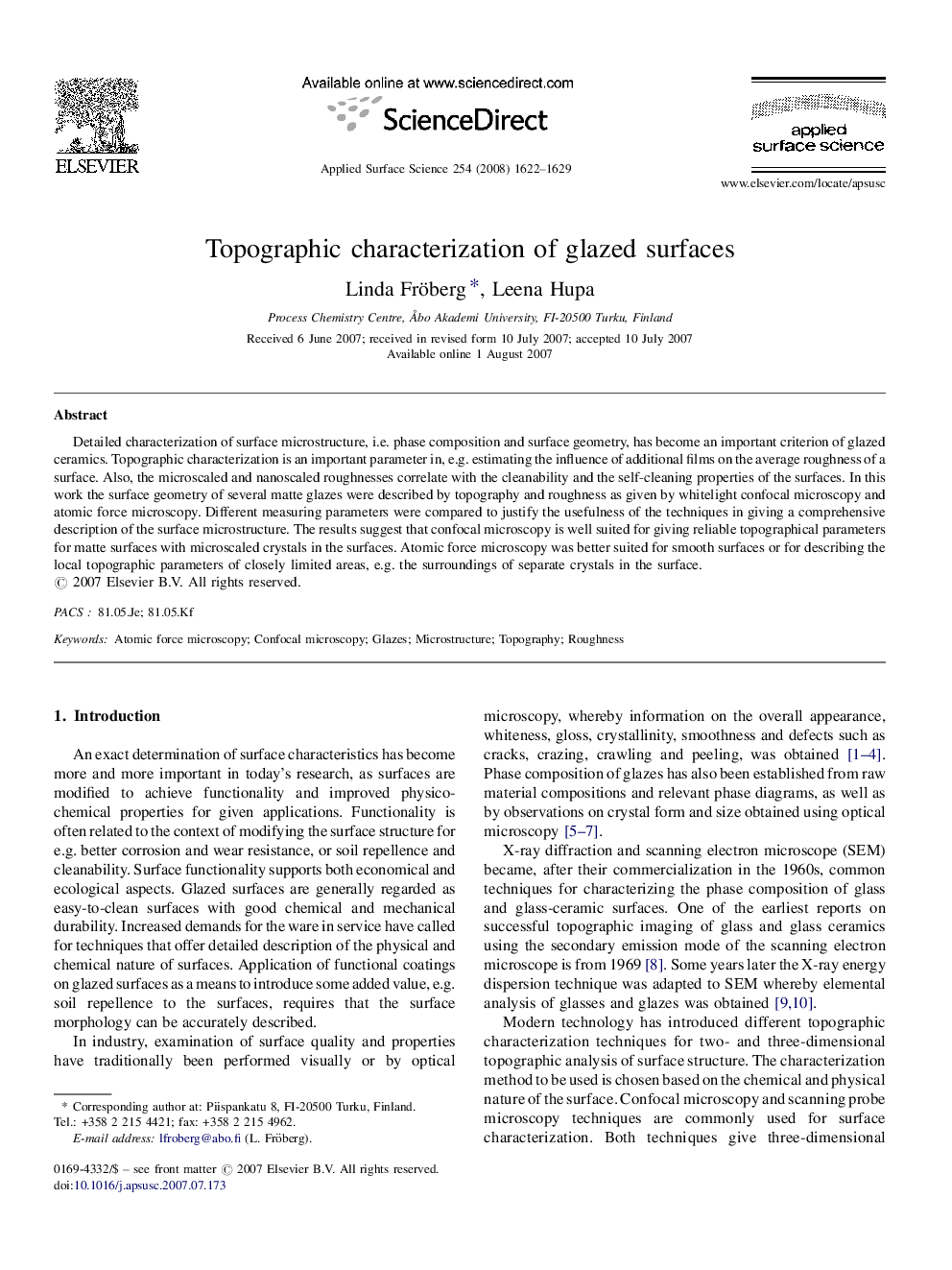| Article ID | Journal | Published Year | Pages | File Type |
|---|---|---|---|---|
| 5369495 | Applied Surface Science | 2008 | 8 Pages |
Detailed characterization of surface microstructure, i.e. phase composition and surface geometry, has become an important criterion of glazed ceramics. Topographic characterization is an important parameter in, e.g. estimating the influence of additional films on the average roughness of a surface. Also, the microscaled and nanoscaled roughnesses correlate with the cleanability and the self-cleaning properties of the surfaces. In this work the surface geometry of several matte glazes were described by topography and roughness as given by whitelight confocal microscopy and atomic force microscopy. Different measuring parameters were compared to justify the usefulness of the techniques in giving a comprehensive description of the surface microstructure. The results suggest that confocal microscopy is well suited for giving reliable topographical parameters for matte surfaces with microscaled crystals in the surfaces. Atomic force microscopy was better suited for smooth surfaces or for describing the local topographic parameters of closely limited areas, e.g. the surroundings of separate crystals in the surface.
